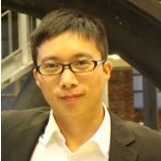Application of 3D Printing in Separation Science: Manufacturing and Modelling
A special issue of Processes (ISSN 2227-9717). This special issue belongs to the section "Manufacturing Processes and Systems".
Deadline for manuscript submissions: closed (31 January 2022) | Viewed by 6147

Special Issue Editors
Interests: 3D printing; membrane separations; chemical absorption; modelling and simulation of separation processes
Interests: covalent/metal organic framework membrane; polymeric membrane; ion separation membrane; nanofiltration; resources recovery by membrane separation; scale up of high-performance membrane
Special Issues, Collections and Topics in MDPI journals
Special Issue Information
Dear Colleagues,
Additive manufacturing (AM), also known as three dimensional (3D) printing, is considered a new manufacturing revolution which can enable cutting-edge research in the field of separation science due to its ability to fabricate objects with complicated structures in a single-step process. The constantly improving print resolution and increasing variety of available printing materials ensure the printing of highly customized separation devices and materials with complex structures, which would be extremely challenging to achieve using traditional manufacturing techniques. Devices and materials applied in separation science such as membranes, trays or packings, sorbents, and modules have internal structures, which include cavities, channels, and pores, as well as superficial structures like patterns. These structures play a critical role in achieving high separation performance. However, there is a challenge in designing and fabricating these complicated structures due to the inefficiencies of the available manufacturing processes. They are unable to ensure excellent precision of dimensions of the internal or superficial structures of separation devices and materials, thus limiting the achievement of excellent separation properties. 3D printing could play a key role in separation systems because it can control the fundamental properties of separation devices and materials such as thickness, pore size, roughness, and surface patterns. Moreover, 3D printing can also control architectural variables of separation devices and materials (e.g., shape, arrangement, channels, and pores), which are almost impossible to achieve with conventional fabrication methods.
This Special Issue focuses on the latest advancements of 3D printing in the fabrication and development of separation devices and materials. Topics include, but are not limited to:
- 3D-printed membrane-based devices and materials
- 3D-printed modules in separation systems
- 3D-printed selective sorbents
- 3D-printed solid-phase extraction preconcentrator
- 3D-printed flow injection analysis systems
- Modelling and simulation of 3D-printed separation devices
Dr. Saeed Mazinani
Dr. Shushan Yuan
Guest Editors
Manuscript Submission Information
Manuscripts should be submitted online at www.mdpi.com by registering and logging in to this website. Once you are registered, click here to go to the submission form. Manuscripts can be submitted until the deadline. All papers will be peer-reviewed. Accepted papers will be published continuously in the journal (as soon as accepted) and will be listed together on the special issue website. Research articles, review articles as well as short communications are invited. For planned papers, a title and short abstract (about 100 words) can be sent to the Editorial Office for announcement on this website.
Submitted manuscripts should not have been published previously, nor be under consideration for publication elsewhere (except conference proceedings papers). All manuscripts are thoroughly refereed through a single-blind peer-review process. A guide for authors and other relevant information for submission of manuscripts is available on the Instructions for Authors page. Processes is an international peer-reviewed open access monthly journal published by MDPI.
Please visit the Instructions for Authors page before submitting a manuscript. The Article Processing Charge (APC) for publication in this open access journal is 2000 CHF (Swiss Francs). Submitted papers should be well formatted and use good English. Authors may use MDPI's English editing service prior to publication or during author revisions.
Keywords
- 3D printing
- Additive manufacturing
- Rapid prototyping
- 3D-printed separation devices
- Separations
- Membranes
- Sorbents






